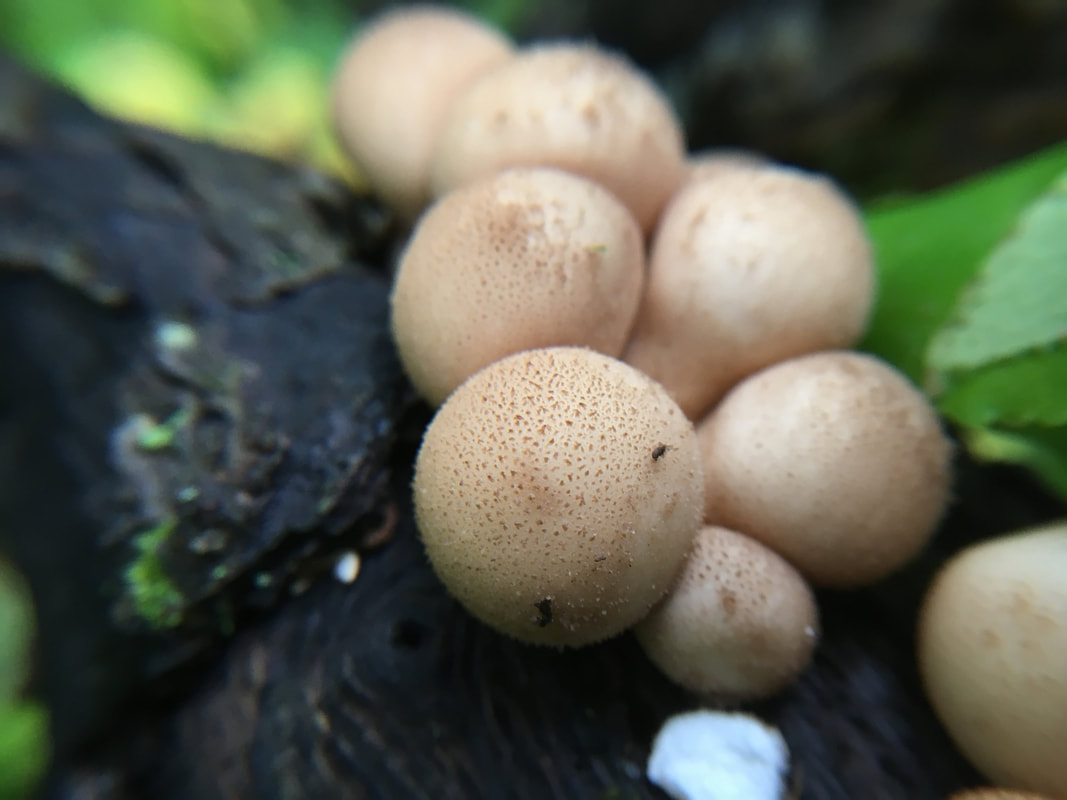|
Mycobank Taxonomy: Fungi, Dikarya, Basidiomycota, Agaricomycotina, Agaricomycetes, Agaricales, Mycenaceae, Sarcomyxa I bemoan the appearance of this beautiful mushroom. The colors of the cap are wildly variable, ranging from ochre to olive-brown to steely blue-grey. It's subtended by a cute stumpy stem that is sometimes freckled. The gills are close and have an orangey-yellow color. So why does it bring me sadness? I divide my year in half: six exuberant months of mushrooms and six horrid ones of frigid temperatures, denuded vegetation, and dormant fungi. True to its name, the late fall oyster signifies the end of the mushroom season and the beginning of the long winter hibernation. In the Great Lakes region, you can find Sarcomyxa serotina growing from hardwood logs in late October and November. And, sorry to say it, there won't really be any edible mushrooms popping up again until the end of May.
0 Comments
Mycobank Taxonomy: Fungi, Dikarya, Basidiomycota, Agaricomycotina, Agaricomycetes, Agaricales, Agaricaceae, Lycoperdon In my opinion, unlike the giant puffball, Lycoperdon pyriforme is actually a good mushroom, even if the translation of its Latin binomial - pear-shaped wolf fart - doesn't suggest it. When young, it looks like a well-behaved toasted marshmallow with a uniform brown color on the outside and white flesh on the inside. As it matures, the entire inside is converted into spores, a tear forms on the top, and the mushroom, well, farts spores when it is impacted by raindrops, falling twigs, or other objects. L. pyriforme makes up for it’s relatively diminutive size and unfortunate Latin name by growing in large clusters on decaying hardwood and conifer stumps and logs, hence its common name: the stump puffball. Its pear-like shape, extensive white rhizomorphs, and growth on wood - a somewhat rare habit for puffballs - make this mushroom fairly unmistakeable.
|
PermalinksProject Introduction Top EdiblesHericium coralloides
Laetiporus sulphureus Morchella americana Polyporus umbellatus Suillus ampliporus Archives
April 2023
Categories |
|
|
Terms of Use, Liability Waiver, and Licensing
The material on aldendirks.com is presented for general informational and educational purposes only, and under no circumstances is to be considered a substitute for identification of an actual biological specimen by a person qualified to make that judgment. Some fungi are poisonous; please be cautious. All images on this website are licensed under Attribution-NonCommercial-NoDerivatives 4.0 International (CC BY-NC-ND 4.0). |


 RSS Feed
RSS Feed




